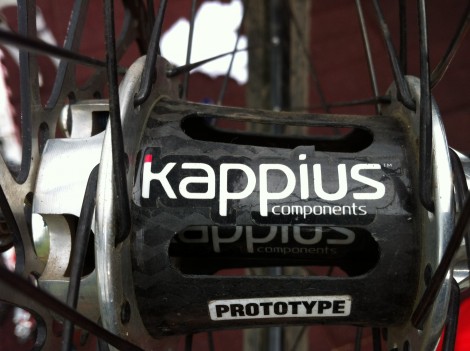As mountain bikers, we have been spoilt by continual product evolution. The bikes we ride and the clothing we wear have moved forward in leaps and bounds. Even bikes from five years ago can look antiquated to what is available now. Many features are the same for a basic cross country bike, but the specificity for bikes more suited to 24 hour racing, Olympic XC, Marathon racing, Stage Racing, All Mountain, Trail, Down Hill, Slope Style, Free ride, Dirt Jumping… the permutations are almost limitless.
Depending when you started mountain biking, or riding in general, there would be bike hassles that you now rarely have to deal with or think about. Loose cranks, threaded headsets that need tightening, having to constantly fiddle with cantilever brakes, and obviously far less time spent fixing flat tyres.
If you ride a lot, you will have experienced the complications that can arise when you wear out a freehub – the drive mechanism in your rear wheel. For some models, spares are not readily available. Some models require overly frequent maintenance, or are painfully expensive to replace. Current freehub designs have the bearings that take the load a long way from their ideal location – which would be right at the edge of the hub. And the freehub diametre creates another constraint on bearing size. So we have bearing locations and sizes that are far from ideal, so our rear hubs require more frequent maintenance than perhaps they could. We have moved bearings further out and increased their size with bottom brackets – so surely doing this on another high load area makes sense.
There is a huge variety of rear hubs available for mountain bikers. We really are spoilt for choice. One feature that we all lust after is the sound that the hub makes when freewheeling. A loud or fast ratcheting sound impresses mates, and sounds cool. It’s the frequency, not the volume, that counts. More clicks in a given rotation is due to more engagement points. And with more engagement points you get faster engagement.
The benefits of faster engagement are obvious. Being able to have power going to the rear wheel almost as soon as you engage the pedals gets you moving quicker. This will be the most noticeable if you need to get a small kick on the pedals in while riding a rock garden, or narrow bench cut singletrack, or getting over a ledge at the top of a technical climb.
Some of us are pretty happy with the wheels we have, and don’t think about how they should be working in a more efficient way. We have accepted what the industry have given us and view the extra maintenance as part of the experience.
Russell Kappius is not one of those people.
As a highly experience cyclist who has tasted success in road and mountain biking over numerous decades, Kappius saw the entry of the freehub onto the market as it replaced the freewheel. From his experience, there are three main problems that any cyclist faces with some frequency: flat tyres, broken chains, and broken freehub bodies.
So Kappius has developed a hub along using ideal design principles for the task that our rear hubs need to achieve. His design philosophy is well thought out and explained, but best viewed on the Kappius Components website. Based on his design principles, he developed the Kappius Hubs with his son, Brady. The bearings are outboard to spread load. The high flanges allow the spokes to follow the best line to the rim. Engagement is super fast – with 240 points of engagement. The hub shells are adaptable using end caps tool free to work change from 135mm QR to 142×12, or QR15 to Standard QR in the front (Lefty also available). And they are light! 110grams for the front, and about 270grams for the rear.
I was able to test a set of Kappius equipped wheels in August, while racing the Breck Epic in Breckenride, Colorado. IN the next part of this review, I’ll discuss the internals and why it creates a better riding hub for all types of bikes.

